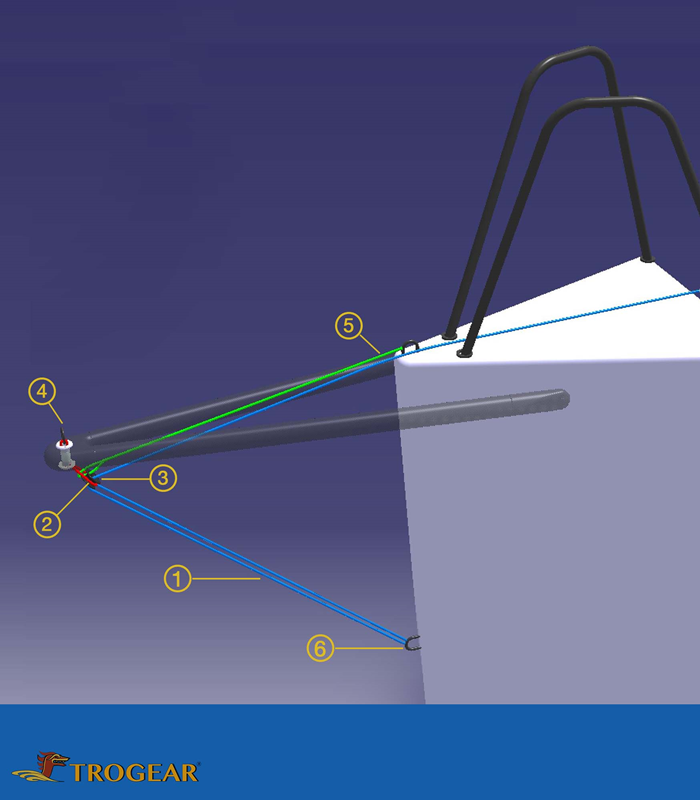Rigging Components
The final set up of your rigging depends on your sailing needs but the following is a list of items that are either essential or optional.
- (#1) Dyneema line for bobstay
- (#2) Dyneema loop used through the tack bushing*
- (#3) Low friction rings
- (#4) SS ring for furler attachment or with block with tack line
- (#5) Dyneema safety preventer**
- (#6) U-bolt for bobstay attachment to the hull or G10 tube through hull
- Bobstay control line led to a clutch in the cockpit
- Bungee Cord – brings the sprit up when bobstay released***
Bobstay Overview
The Purpose: A bobstay is a structural component of the Trogear bowsprit. It keeps the bowsprit in a horizontal position preventing it from flying upwards when under load.
Hinge Attachment: The main feature of the Trogear bowsprit is the hinge attachment, which enables the sprit to rotate up and down. To take full advantage of this design, it is recommended to rig the bobstay with a 2:1 purchase system, with a control line leading to a clutch and a winch to the cockpit. This will allow you to remotely adjust the sail luff tension or bring the bowsprit to the upright position (for stowing or attaching/removing tack sails or furler).
Loads on the Bobstay: The load generated by a Code 0 or Asymmetrical spinnaker could be very high (the load on the bobstay is generally 1.5 times the tack load), especially when reaching, or if subjected to shock loads. Therefore, the bobstay components need to be sized accordingly with a minimum safety factor of two.
Estimating Tack Loads: Click on the image below to expand.


